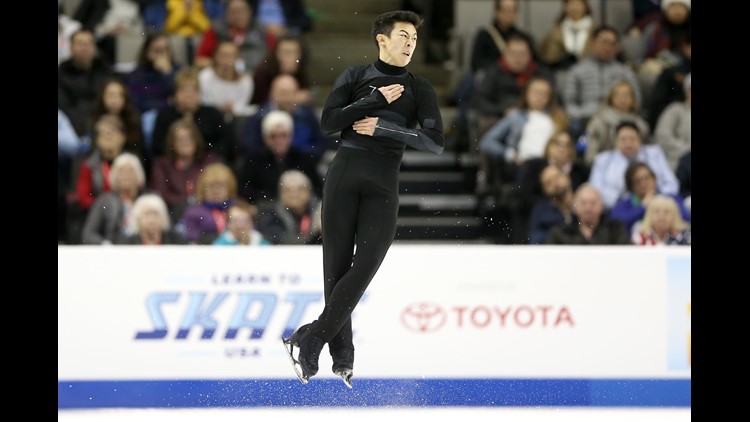Figure skating is one of the most watched events in the Winter Olympics. The combination of artistry and athleticism on ice is something that’s impossible to look away from, but it’s not always easy to understand what’s going on. To an untrained eye, a lot of the jumps and twirls look the same, but there are several different types of distinct jumps.
There are six types of jumps in figure skating. In order from most to least difficult, they are the Axel, Lutz, flip, loop, Salchow and toe loop. The more difficult a jump is, the higher its point value.
What differentiates all these different jumps? The position of the take-off foot. Each skate blade has two edges on either side of a grooved center. The inside edges of the blade are along the inner thigh, and the outside edges are along the outer thigh. Jumps are distinguished by which edge the skater takes off and lands on.
The six jumps are also categorized into toe jumps or edge jumps. In a toe jump, the skater pushes off from the ice with the front part, or the toe, of the blade. The toe loop, flip and Lutz are toe jumps.
Edge jumps are considered a little harder than toe jumps because the skater takes off from the ice without any assistance from the other foot. The Salchow, Axel and loop are all edge jumps.
Here’s the breakdown for each jump:
Axel
The Axel is the most difficult jump, and the only jump where the skater takes off going forwards, or from a forward edge. The skater takes off facing forward on an outside edge, spins in the air for 1.5 rotations, and lands backwards on the outside edge of the other foot. Because the skater takes off facing forward, there’s always an extra half rotation in the spin. A double Axel would involve 2.5 rotations, and a triple would have 3.5 rotations. The move is named after its inventor, Axel Paulson.
Lutz
Austrian Alois Lutz first performed this toe jump in 1913. In a Lutz, skaters start skating backwards in a large curve, and take off from the back outside edge of their foot, using the toe of the other foot to propel them upwards. The Lutz’s difficulty comes from how the skater must rotate in the opposite direction of the curve before landing once again on the back outside edge, but on the opposite foot.
Flip:
In a flip, skaters take off from the back inside edge of their skate, while using the toe of the other foot to propel them forwards (This is different from a Lutz, which uses the back outside edge). Skaters then land on the back outside edge of the opposite foot.
Loop:
The loop jump is a edge jump. Skaters take off and land on the back outside edge of the same foot.
Salchow:
Sweden’s Ulrich Salchow invented this jump, where skaters take off from the back inside edge of one foot and land on the back outside edge of the other foot. Players take off and land on opposite edges and opposite feet.
Toe Loop:
The toe loop is very similar to the loop. Skaters take off and land on the same edge and foot, just as in a loop. When doing a toe loop, skaters use the toe of their opposite foot to assist them into the air. In a regular loop, skaters wouldn’t use their toe pick.
Moves for pairs
The six basic jumps make up a routine for a single skater, but for the pairs skate and ice dancing events, a few more moves are added.
Twizzle:
Twizzles are commonly seen in ice dancing routine. Twizzles are a series of turns on one foot, and in ice dancing the pair turns side by side in sync.
Death spiral:
You’ll see death spirals in the pairs skating event. For this move, the male partner acts as an anchor and spins in a circle while the female partner holds on to his hand while she lays parallel to the ground and rotates around him.
Throw jump:
In a pairs skating routine, the male partner throws his partner into the air, where she rotates before landing unassisted.
Twist:
The twist is similar to a throw jump in pairs skating. The man throws his partner into the air where she rotates, but catches her before placing her back down onto the ice.



